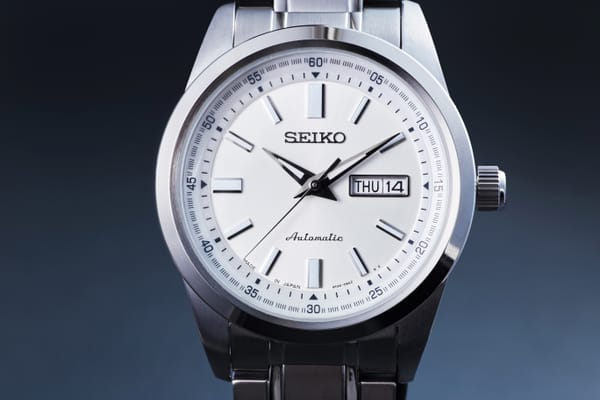A Review Of The Canon EOS-1N Film Camera
With a production life that spanned from 1994-2000, this camera was the ultimate image making tool that Canon offered at the time and this is still evident in every aspect of the body, features, and design.
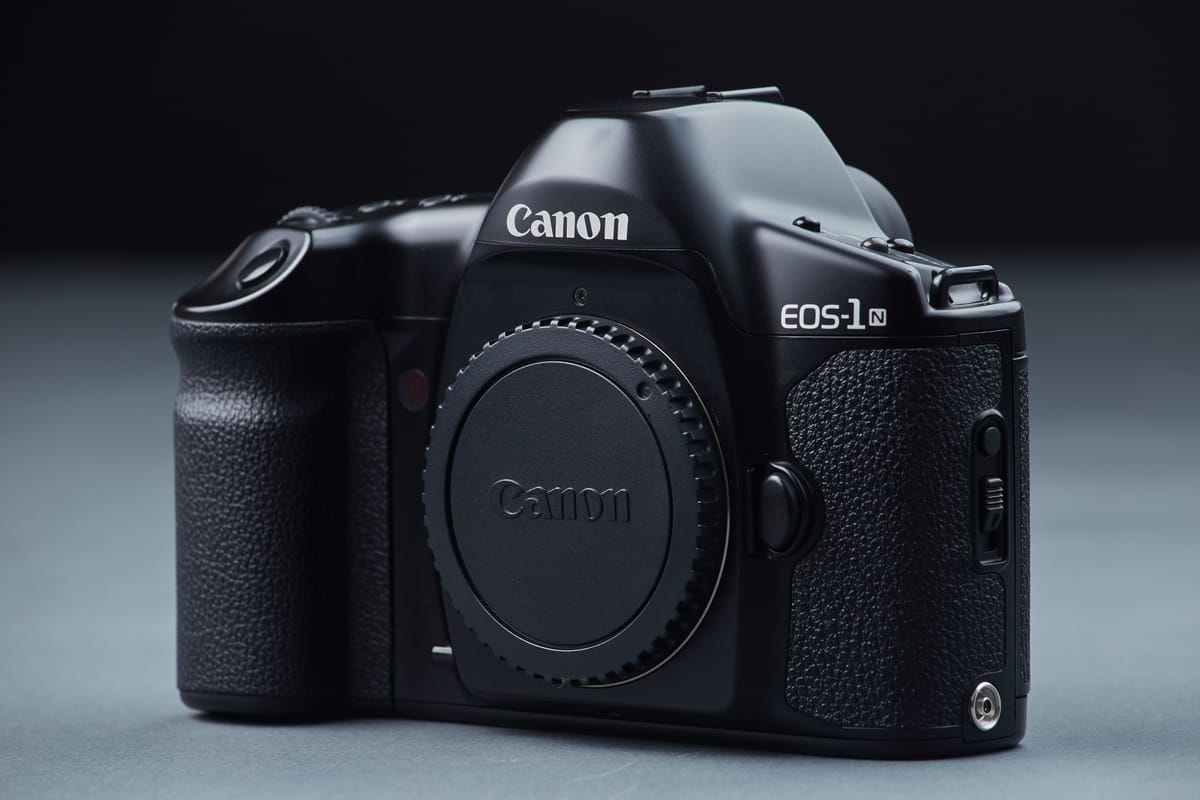
Decaf Journal is reader-supported. When you buy links through our site, we may earn an affiliate commission.
Over the last twenty years, film photography has come in and out of my life several times. My first real camera at 17 years old was a Canon EOS film SLR that I took with me everywhere, learning the fundamentals of photography through trial and error while burning through (or investing?) a lot of money on film and lab development costs in the process. A decade later, I flirted with analog film again for a while until I became frustrated with my local lab scratching my film on a consistent basis, and from 2016 - 2019 I shot film pretty much exclusively with a Mamiya RZ67 Pro ii medium format SLR alongside a Zeiss Ikon ZM 35mm rangefinder.
Eventually I became somewhat disillusioned from the realization that the majority of clients simply don't care what an image was shot on, and sold off both cameras for well below market value to further invest in Canon's latest and greatest L series lenses for my quickly expanding digital kit. My thought process with film at the time was all or nothing, either my shoots would be captured on celluloid across the board or I wouldn't bother with it any longer. It took about five years after this fire sale took place, but I began to see the holes in my logic and wondered why I couldn't just take a more balanced approach to choosing different creative tools for various projects.
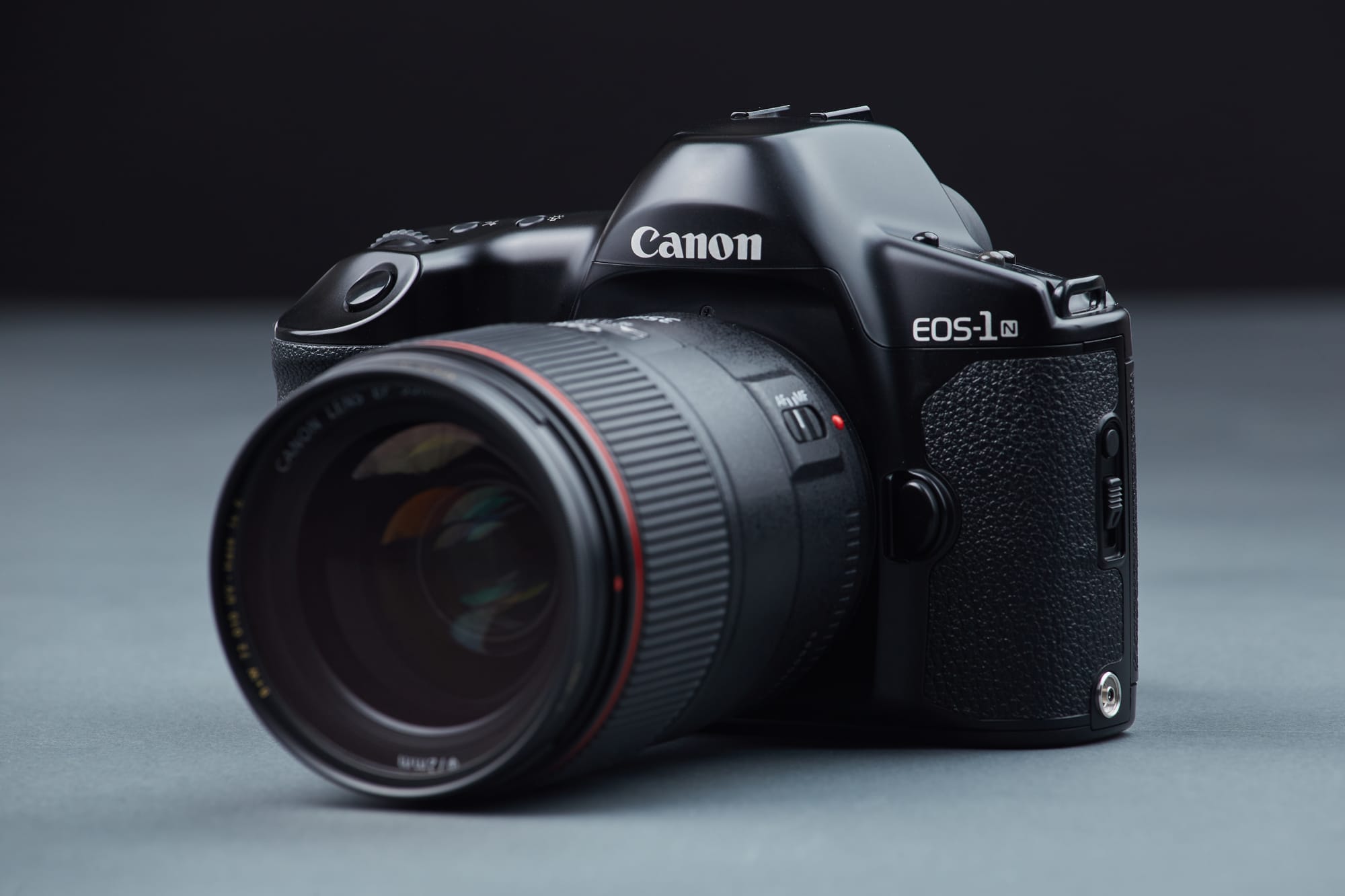
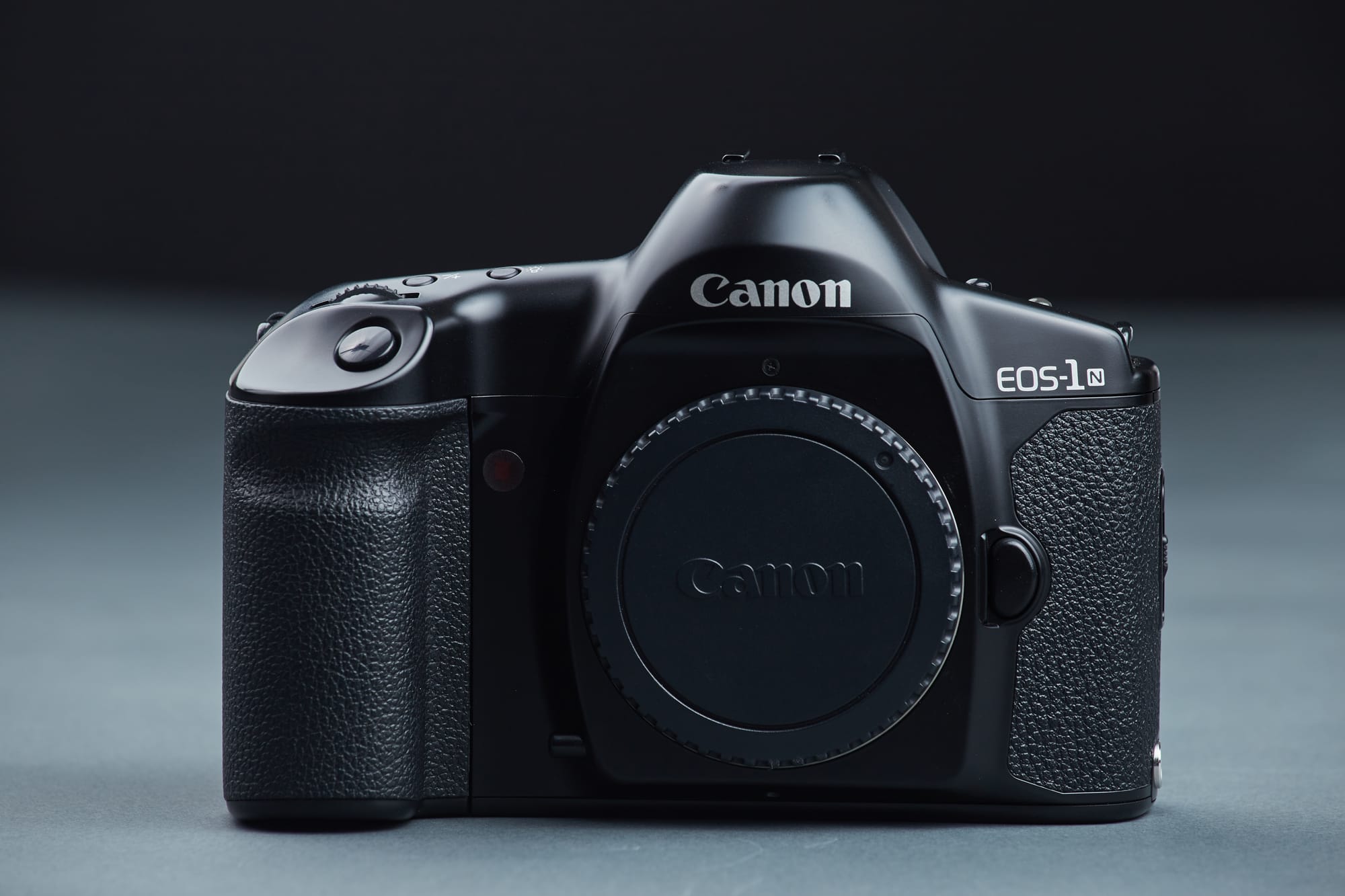
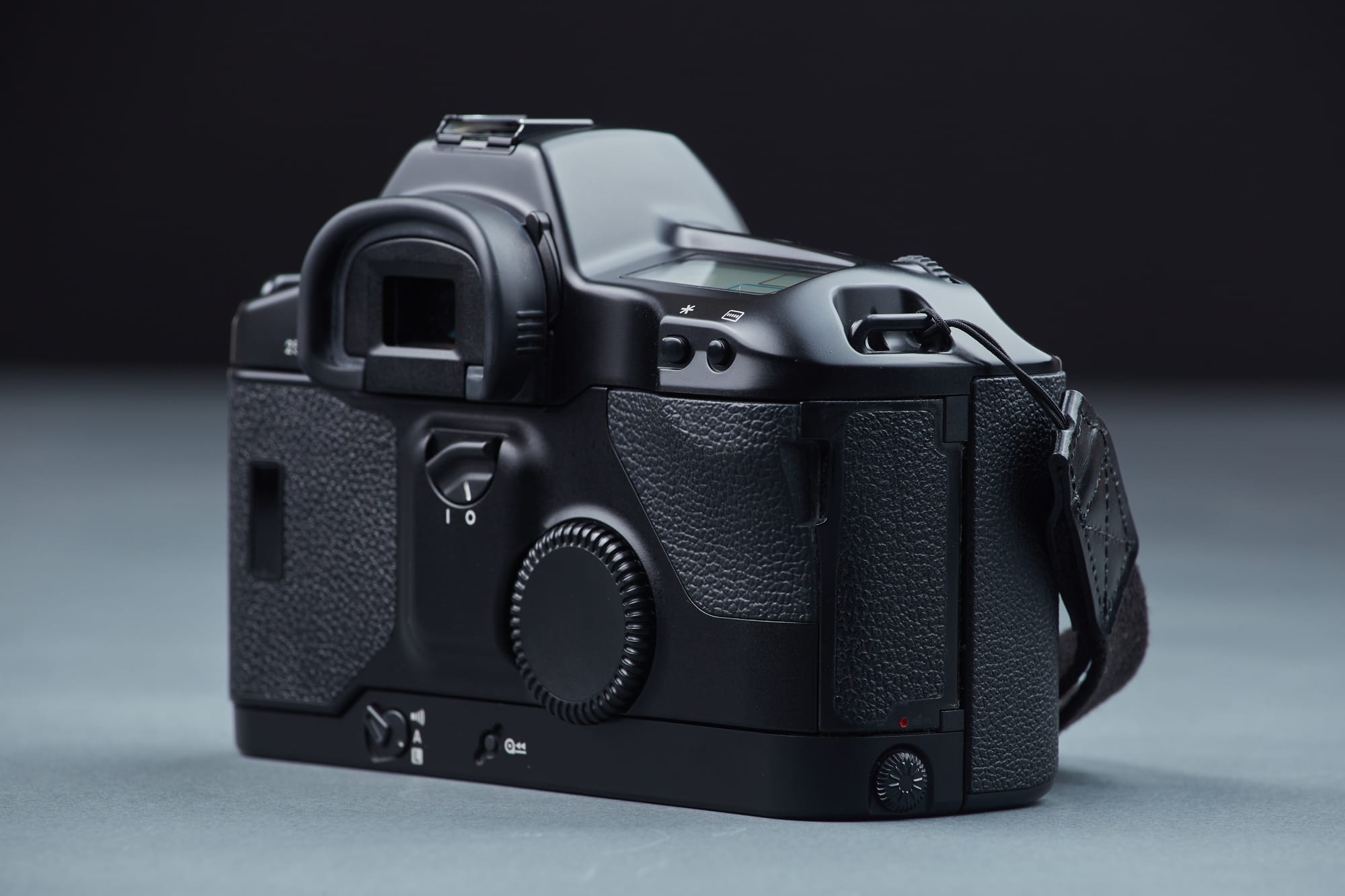
This mental reconfiguration happened just before I visited Japan for the first time in early 2024. I swear it wasn't planned, but I spotted the exact camera I'd been casually eyeing on eBay right in front of me at Kitamura Honnsiya Camera in Osaka. The Canon EOS-1N in the glass display case was in cosmetically flawless condition, and without further deliberation I purchased it for just under JP¥22,000. An absolute steal by my napkin math calculations.
Now after using it for just over a year, I've developed a well informed opinion on whether or not this camera is worth your time and money. And the answer isn't exactly straightforward, nor will it be the same for everyone.
Build Quality & Design
I've previously owned the Canon EOS Elan 7N as well as the EOS 3, and while both models are fantastic cameras in their own right, the EOS-1N gives the impression of a true flagship. Literally every inch of the camera feels extremely durable, as if it will easily outlast me. It sports confidence inspiring weather-resistant seals throughout the body, however due to its age my camera does have a small amount of dust in the viewfinder.
It's not excessively large by any means, but it is a heavy camera for its size given its exceptional build quality. The grip is absolutely fantastic and feels great in the hands as well. This translates to an SLR that balances nicely with Canon's professional line of L series lenses which are also known for their rugged build.
The Canon EOS 1-N requires a 2CR5 battery in order to operate. Thankfully this speciality battery is still relatively easy to find at many electronics stores, drug stores, and online.
The benefits of using an electronic SLR mean that the camera includes a fully automated film advance and rewind system. This makes it very convenient to load and unload the film since the camera takes care of the work for you.
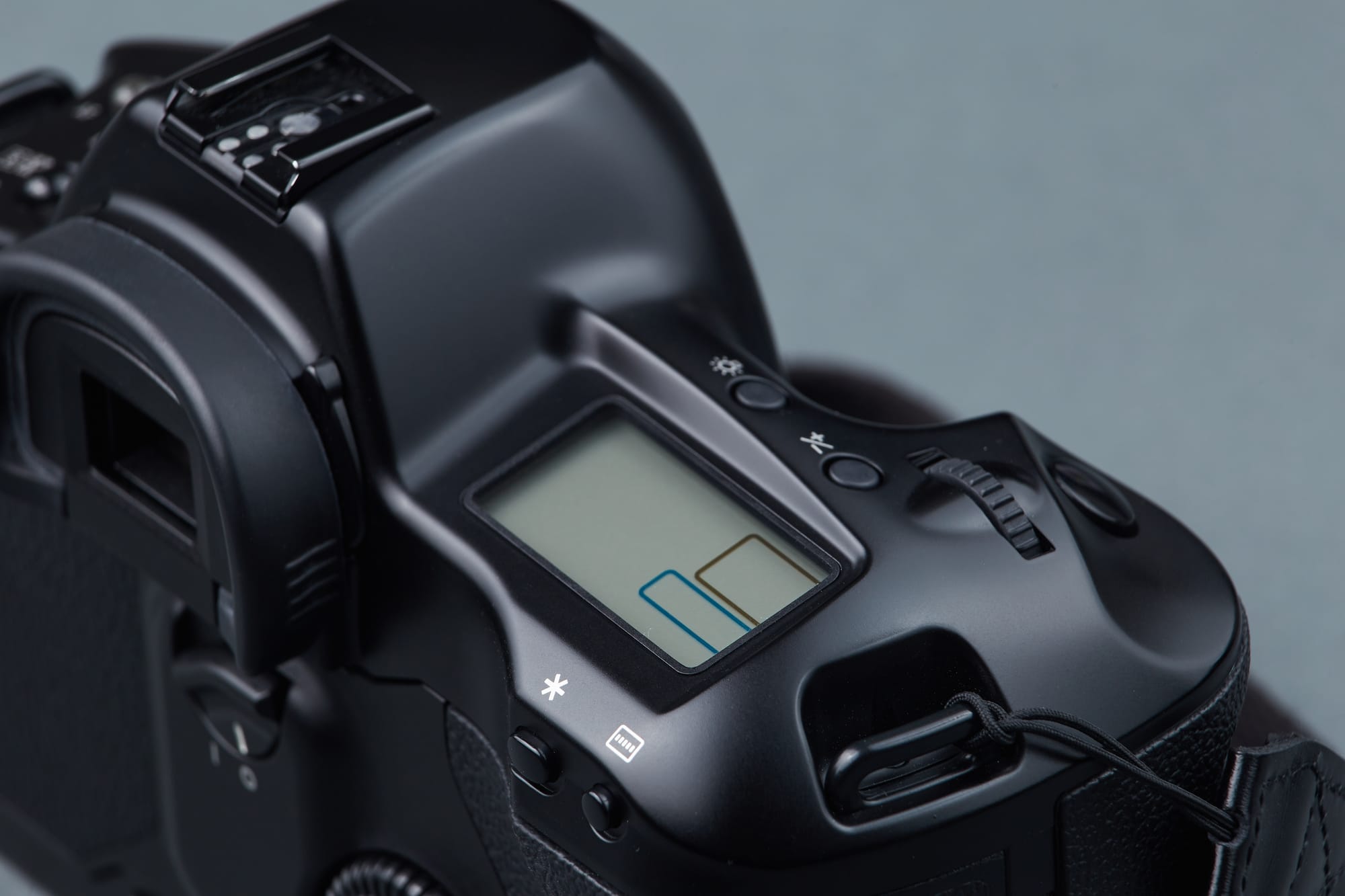
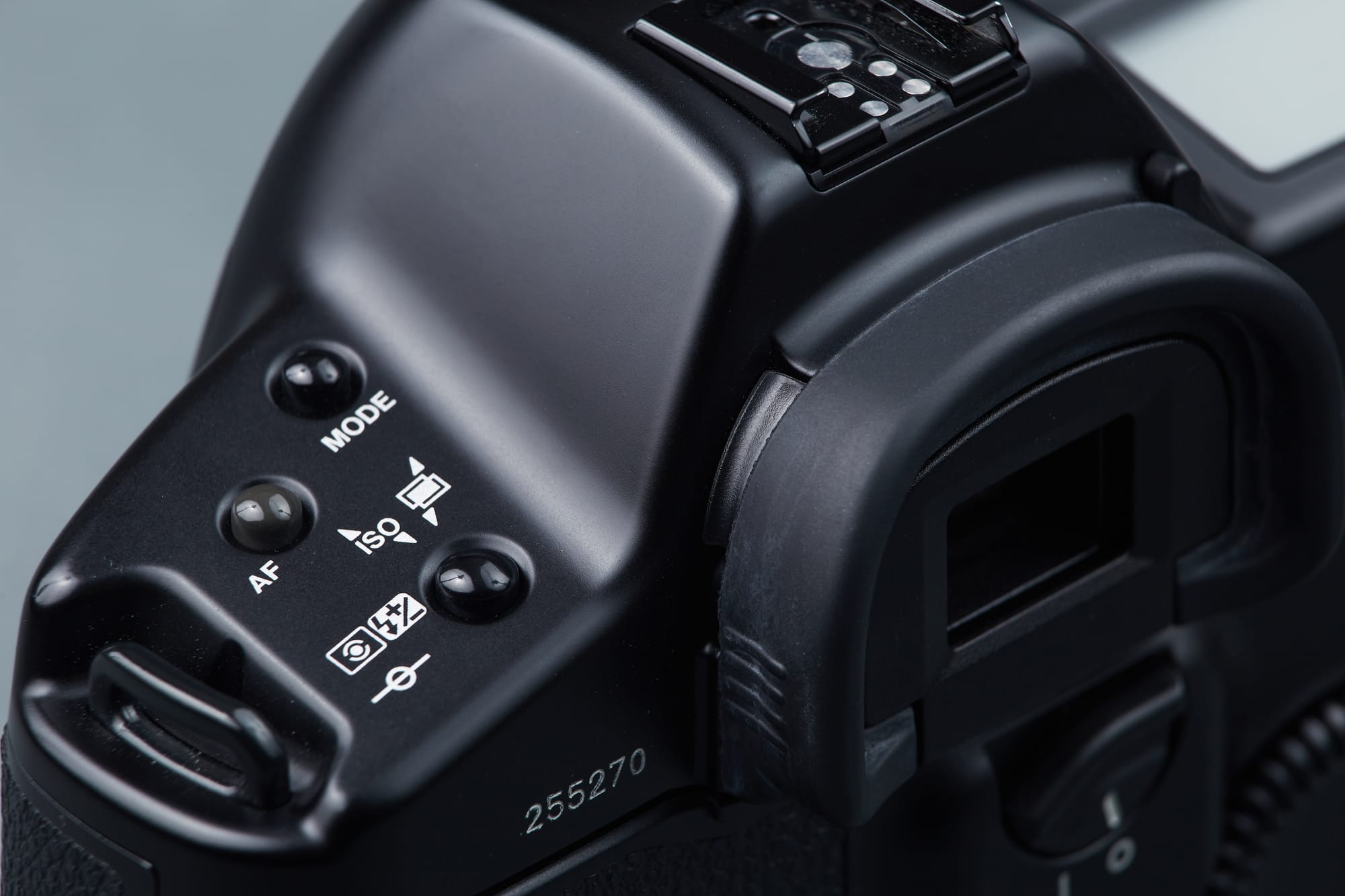
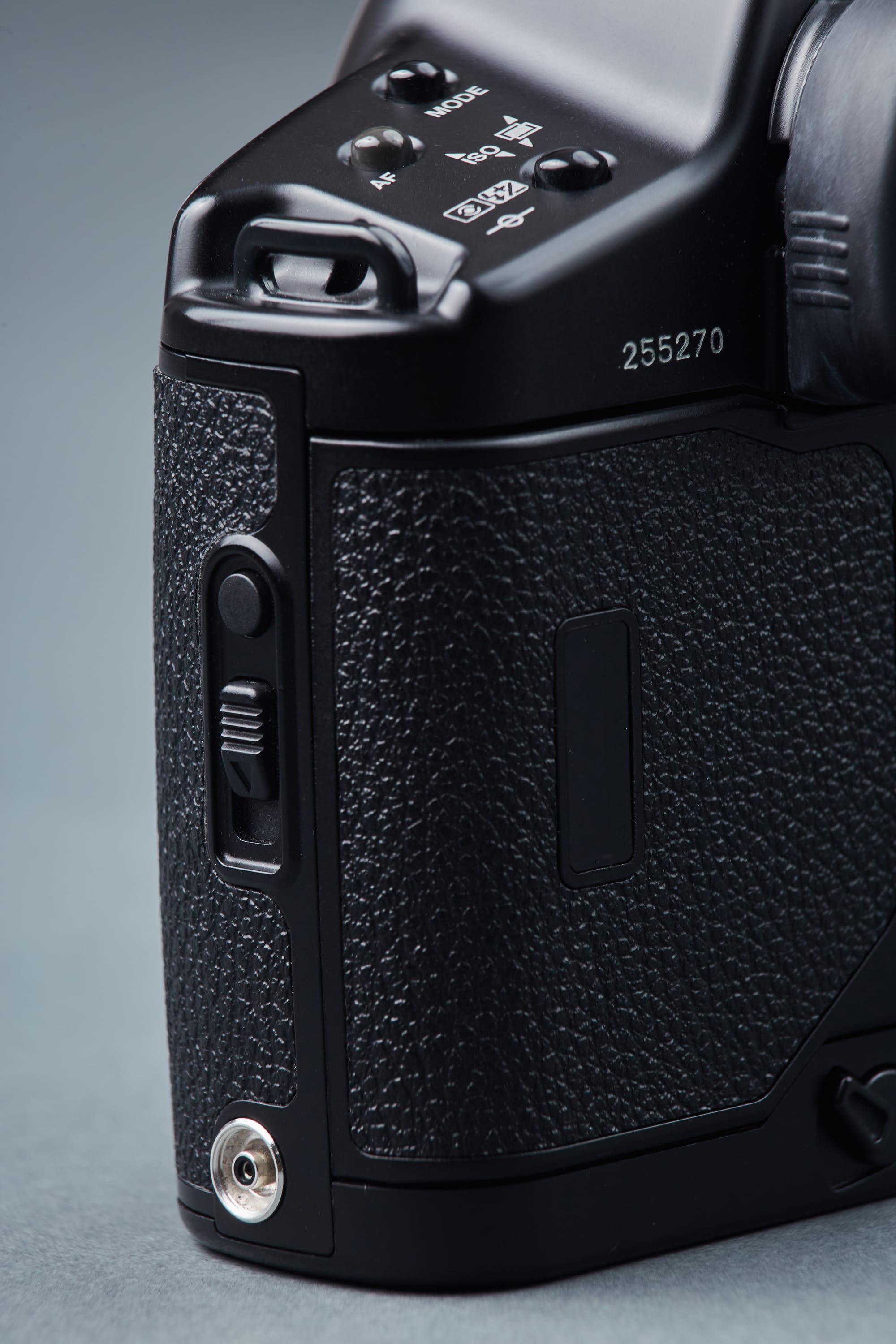
On the topic of loading film, opening the back of the camera is a two step operation for maximum security. You can see in the photo above that there's both an unlock button and a switch on the left hand side of the body, which makes it nearly impossible to accidentally open it and subsequently ruin an entire roll of film.
Just below on the same side of the camera, there's a PC port to connect an external flash via a cable if for whatever reason you aren't able to connect it to the hotshoe. And it's worth using too, because the Canon EOS-1N features a quick 1/250th second flash sync speed which isn't often seen in Canon cameras these days but is critical for freezing action and overpowering sunlight. Speaking of speed, the camera also offers up to 6 frames per second continuous shooting, though honestly it doesn't make sense to shoot film like this anymore when digital will provide unlimited frames without having to worry about the cost per image.
Additionally, the camera has a remote release socket on the other side of the body in case you wish to trigger the shutter using a cable instead of the standard shutter button. This is useful when taking long exposures on a tripod, as it will further minimize camera shake to ensure a sharp image.
On the top right hand side of the camera, you'll find an LCD that displays your current ISO, metering mode, shutter speed, and aperture settings. It can also be lit up with the touch of a button for convenient reading in low light environments. This allows you to always see all of your camera's current settings at a glance without having to look through the viewfinder and when out shooting I'm referencing it constantly.
You won't find a joystick on the back of the Canon EOS-1N to control autofocus points as you would on modern professional Canon cameras. Instead, focus points are selected by using the large scroll wheel on the back of the camera. This works well, but it can take a bit of getting used to if you're coming from a DSLR or mirrorless camera. There are only 5 autofocus points, but it's more than enough for my style of shooting as I prefer to use a focus and recompose center point technique rather than constantly switching focus points.
Also on the back of the camera is where you have the option to toggle the audible focus confirmation beep on / off, as well as a useful switch that will lock the rear dial from changing settings inadvertently. It's worth noting that many of the camera's functions have their own dedicated button, but there are some such as changing the ISO setting that are a press and hold affair using two buttons.
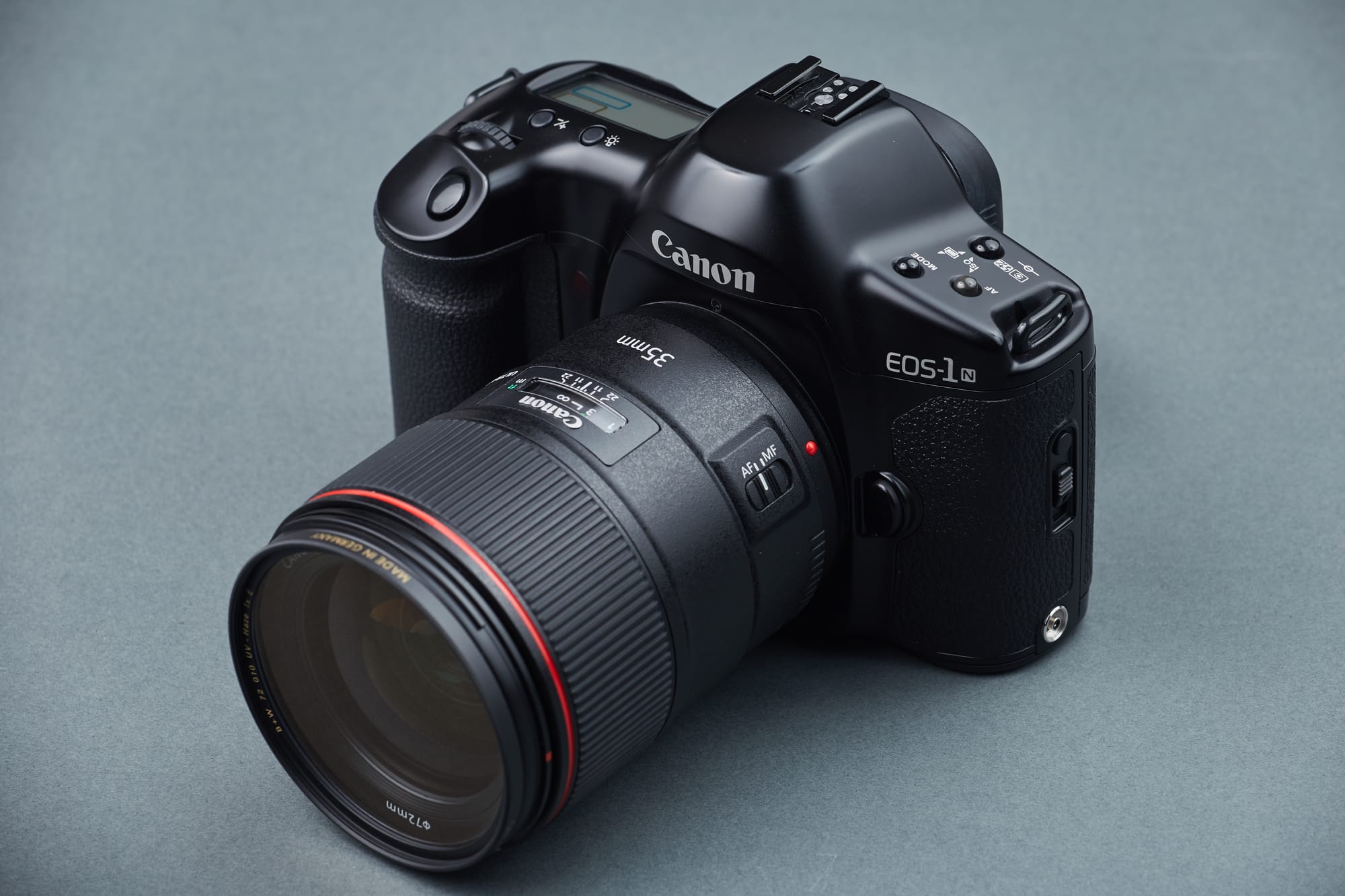
In Use
Real world performance of the Canon EOS-1N is where things get complicated. On one hand, the camera has many positives going for it. For starters, the actuation of the shutter is the epitome of what a real camera should sound like, which makes the process of actually going out and making pictures an enjoyable experience.
I have no complaints about the focusing system, which is both quick and accurate. It also offers superb metering modes, as I've yet to encounter any exposure issues whatsoever thus far. And the camera works just as well with modern EF lenses as it does with the earliest releases from the late 80s.
The downsides however, put a real wet blanket on what I'd consider to be an otherwise perfect film SLR. Unfortunately, the Canon EOS-1N is temperamental to say the least, and its aging electronics are to blame here.
The most well documented issue is the dreaded and all too generic BC Error, which tends to show up if the camera hasn't been used in a while. I thought my copy was immune to this, but it eventually showed up a few months after ownership. My guess is that all copies of this camera are affected by now, but thankfully it can be resolved either by changing the battery or using a powerful set of magnets as shown in the video below:
© Mike Sowsun
But that's not all folks. I've also found that keeping a third party lens (Zeiss, Sigma, etc) attached to the camera even when it isn't on will rapidly drain the battery life down to zero in just a couple of days. Even when no lens is attached when the camera is stored, I've noticed that the battery life just doesn't last as long as any other film body I've owned.
All of that said, these annoyances can largely be overcome by always carrying a spare battery and a couple of powerful magnets in the camera bag. You need to be prepared for the unexpected at all times, which frankly will be a deal breaker for most people. This is disappointing because it doesn't get much better than the Canon EOS-1N in terms of what today's analog photographers are looking for in an electronic film SLR.
Pros
- Built like a tank
- Weather-resistant seals throughout the body
- Works seamlessly with every EF mount lens ever made
- Excellent grip that feels great in the hands
- Easy to load / unload film thanks to fully electronic operation
- 1/250th second flash sync speed
- Excellent value, costs much less than the more recent Canon EOS-1V
Cons
- Third party lenses drain battery life even when turned off
- Semi-frequent BC error can be vague and is a nuisance to deal with
- Battery life is unreliable when camera isn’t used consistently. I often find the battery dead after not using it for a few weeks.
- No joystick for selecting autofocus points
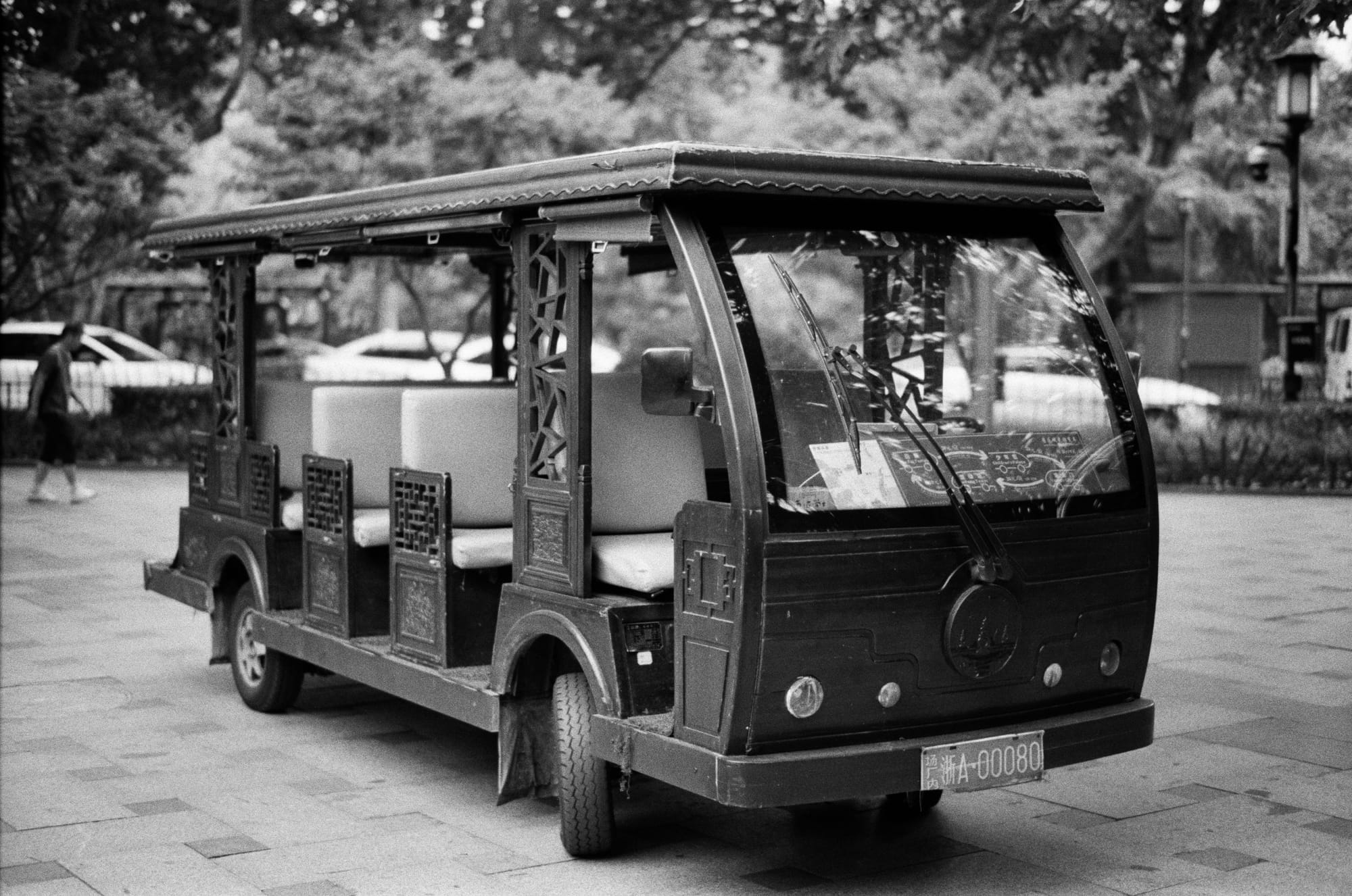



Verdict
With a production life that spanned from 1994-2000, this camera was the ultimate image making tool that Canon offered at the time and this is still evident in every aspect of the body, features, and design. It was eventually being replaced by Canon's last flagship film camera ever, the EOS-1V which is substantially more expensive. Yet, I'd argue that you'd be hard pressed to tell a meaningful difference between the two models now.
The Canon EOS 1-N is a truly amazing camera for those who are willing to work with its idiosyncrasies, especially those looking for a rugged body, a great grip, and many of the automated features that we still see on modern Canon cameras today. Sadly however, it's simply too quirky in terms of reliability to be someone's starter film camera or one that a professional would choose to exclusively rely on.
If you're just starting out in film photography, I'd recommend an all manual SLR such as the Nikon FM2 or Nikon FM3A over this. The Canon EOS-1N really only makes sense if you are already invested in Canon's extensive EF lens ecosystem like I am. Don't get me wrong, I still love this camera. But it's pretty annoying at times.




